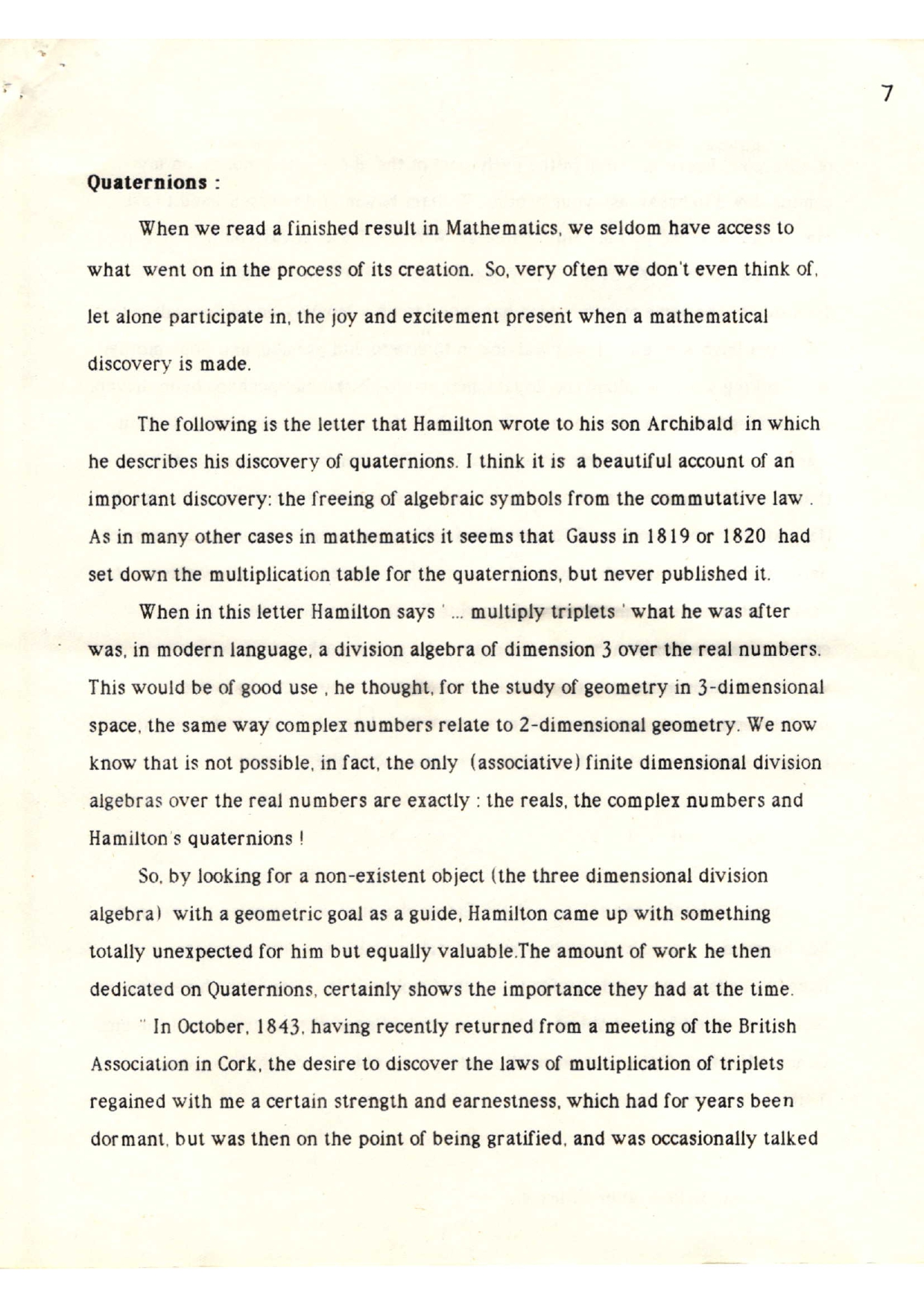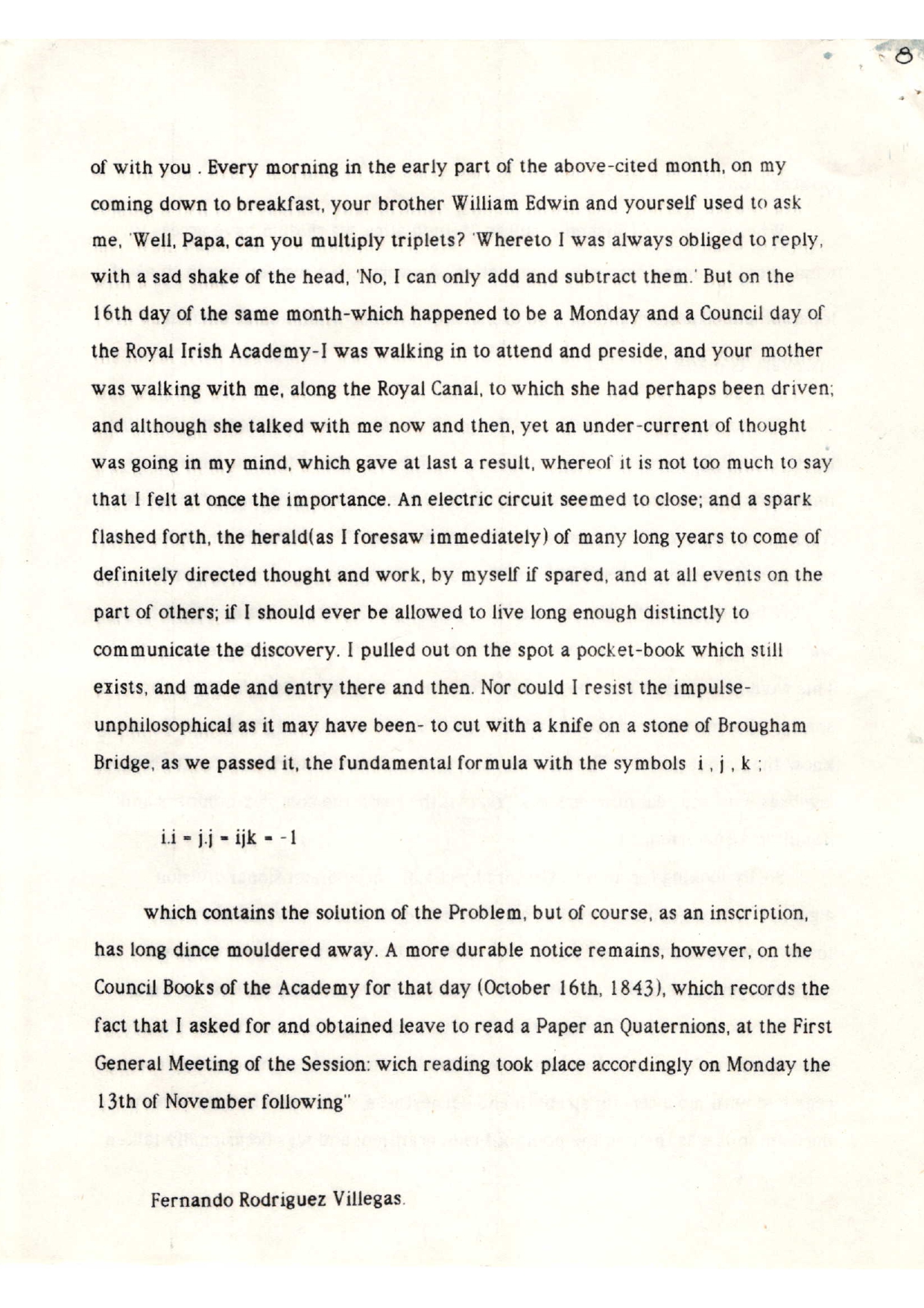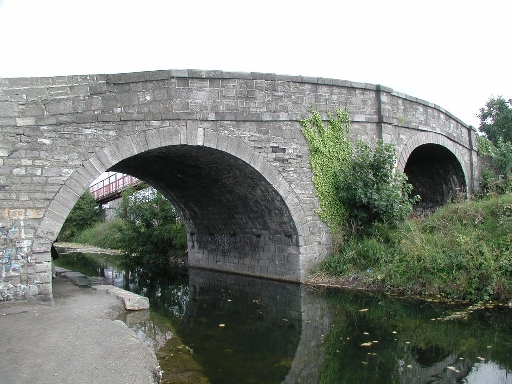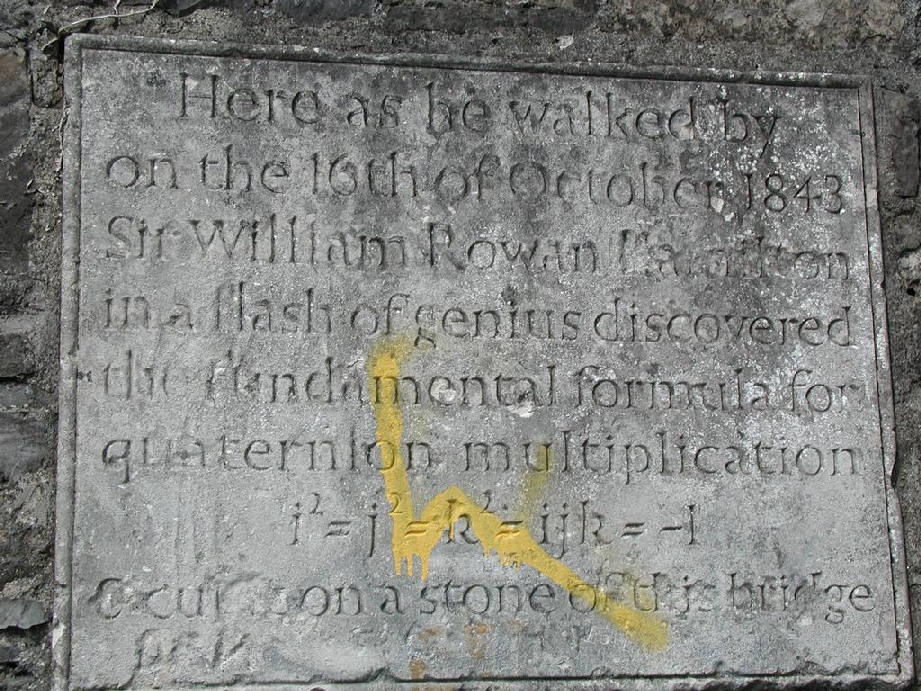Hamilton and the Discovery of Quaternions
By Fernando Rodriguez Villegas
- Categories: Writing
Towards the end of my Ph.D. years at The Ohio State University together with a bunch of graduate students we thought of publishing our own magazine. We struggled to come up with a good name for it so after a lot of back and forth we settled on “The Empy Set”. The OSU graduate advisor found this too nihilistic and wanted us to pick a different name. We nevertheless wrote what inevitably ended up being the only issue of “The Empty Set” and circulated it among the department.
The following article on the discovery of the quaternions by Hamilton was my main contribution to the magazine. I read Hamilton’s letter to his son on the story in the preface to his collected works and found it fascinating. I still remember being really struck by how well it captured the way a mathematical problem can take over your self and how relevant insights can strike at random (…an under-current thought was going through my mind…).


A nice post by John Baez has more about the actual bridge, the Brougham (Broom) Bridge in Dublin, in which Hamilton famously inscribed the quaternion relations with his penknife (now commemorated with a plaque).
I borrowed a few of his pictures.

Bridge

Plaque
After going back to this old note I was reminded of a question from an undergraduate student in my course Math, Puzzles and Computers. He asked me about quaternions, which where not part of the course at all. I was really curious as to why he wanted to know; it was because quaternions were relevant in the design of video games. We never got to talk about quaternions in the end but the brief exchange stayed with me all this time.
I plan to write a separate post about quaternions and computer animation and the eerie echoes of the now-crazy-sounding controversy on quaternions vs. vectors ensuing their discovery. But I can’t resist quoting here a paper of Cayley (Coordinates vs. Quaternions, Proceedings of the Royal Society of Edinburgh, vol. xx. (1895), pp. 271—275. Read July 2, 1894.):
It is contended that Quaternions (as a method) are more comprehensive and less artificial than—and, in fact, in every way far superior to—Coordinates.
Cayley is referring here to Prof. Tait (of Hamilton’s quaternion camp) and his book Elementary Treatise on Quaternions of 1867, who in the preface writes of:
..such elegant trifles as trilinear coordinates…
Cayley goes on to say:
I have the highest admiration for the notion of a quaternion; but (I am not sure whether I did or did not use the illustration many years ago in conversation with Professor Tait), as I consider the full moon far more beautiful than any moonlit view, so I regard the notion of a quaternion as far more beautiful than any of its applications. As another illustration which I gave him, I compare a quaternion formula to a pocket-map—a capital thing to put in one’s pocket, but which for use must be unfolded: the formula, to be understood, must be translated into coordinates.
(There is something irresistible in the poetic way that some English mathematicians of old (Cayley, Silvester) wrote Mathematics.)
But:
In conclusion, I would say that while coordinates are applicable to the whole science of geometry, and are the natural and appropriate basis and method in the science, quaternions seem to me a particular and very artificial method for treating such parts of the science of three-dimensional geometry as are most naturally discussed by means of the rectangular coordinates x, y, z.
Trifles indeed.